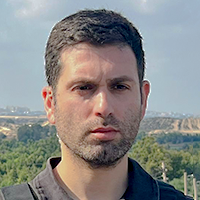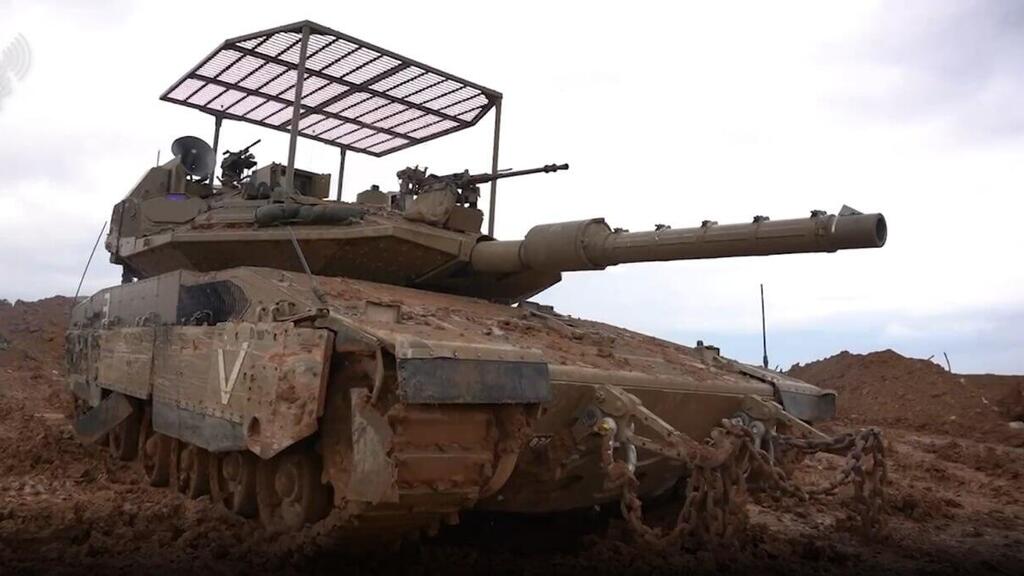Getting your Trinity Audio player ready...
The crisis stemming from Israel’s delay in releasing Palestinian prisoners has intensified doubts over the continuation of the cease-fire and the second phase of hostage negotiations, prompting both Israel and Hamas to brace for renewed fighting.
The 35-day cease-fire has allowed Hamas to reorganize its severely weakened forces, rebuild units damaged during 14 months of fighting and remain committed to attacking Israel, similar to its assault on October 7, 2023.
IDF tanks on the border with Gaza
(Video: IDF)
During the cease-fire, thousands of Hamas operatives, mingled with returning civilians, moved northward in Gaza following Israel's withdrawal from the Netzarim Corridor and the return of about half a million Palestinians to Gaza City. Tens of thousands found damaged or destroyed homes and returned to displacement centers near Khan Younis.
Hamas terrorists regrouped into new combat units alongside thousands who had remained in northern Gaza throughout the fighting, though Israeli security officials assess these new formations remain weaker than Hamas' military capabilities prior to the war.
Hamas’ reorganization likely includes appointing new commanders, utilizing undetected tunnels, constructing additional underground spaces, clearing explosives previously set to target Israeli troops and creating new explosive traps.
Israeli surveillance identified rocket launchers and camera installations intended to monitor military activity. At least three rockets were fired from Gaza last week, likely accidentally, amid these preparations. Surveillance drones were also launched, and attempts by Israeli Arabs to smuggle equipment via drones were intercepted.
2 View gallery


Armed Hamas terrorists during the release of hostages on Saturday
(Photo: Ramadan Abed / Reuters)
Israeli military sources say Hamas learned key lessons from previous Israeli ground operations, noting that the group never deployed its entire 30,000-strong force during the previous fighting, recognizing it would not receive support from Hezbollah or other fronts.
Additionally, Hamas has used civilian governance to rebuild its military and economic strength. During the cease-fire period, the terror group reclaimed control over municipalities and civilian infrastructure, including schools and social services. Hamas terrorists have set up checkpoints to seize hundreds of tons of food, fuel and water entering Gaza daily under agreements with Israel, re-establishing taxation systems to finance salaries for operatives.
Get the Ynetnews app on your smartphone: Google Play: https://bit.ly/4eJ37pE | Apple App Store: https://bit.ly/3ZL7iNv
“Every day of the cease-fire helps Hamas relocate operatives, issue commands and rebuild,” IDF officials said. “They face severe shortages in personnel, equipment and command infrastructure due to Israel’s offensive, but the last month proves significant work remains before Hamas is defeated.”
Meanwhile, given the Israeli government's apparent reluctance to move toward the second phase of the hostage deal, the IDF is preparing for renewed ground combat, gathering new targets intended to weaken Hamas' civilian control in Gaza. Such operations would involve substantial troop deployments with close air support. However, military commanders remain aware of the strain on reserve forces, extensively mobilized over the past year-and-a-half.
Regarding the Gaza emigration proposal championed by U.S. President Donald Trump and Prime Minister Benjamin Netanyahu, security sources now indicate it is unlikely to move forward. The primary obstacle is the absence of a third country willing to accept Palestinians voluntarily leaving Gaza.
“There are far more problems than realistic chances of this initiative succeeding,” a senior security official said. “If we manage a pilot program, perhaps with a few hundred Gazans voluntarily leaving despite Hamas checkpoints, others might follow—particularly if offered the option to return later. Jordan and Egypt, however, are unwilling to accept such migrants, highlighting a gap between public statements and practical realities.”
IDF officials further question the initiative’s value in achieving Israel’s strategic goals. “Even if we succeeded in relocating tens or even hundreds of thousands of Gazans without accusations of war crimes, how would this topple Hamas?” one official asked. “While Hamas’ internal legitimacy might suffer, it would still retain control over more than a million Palestinians in Gaza.”







